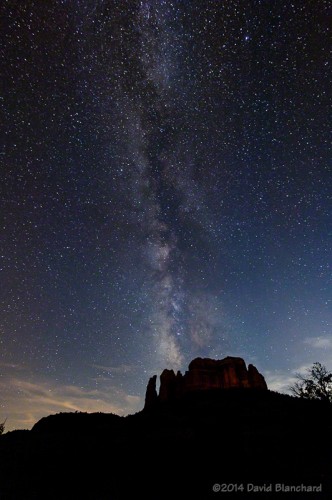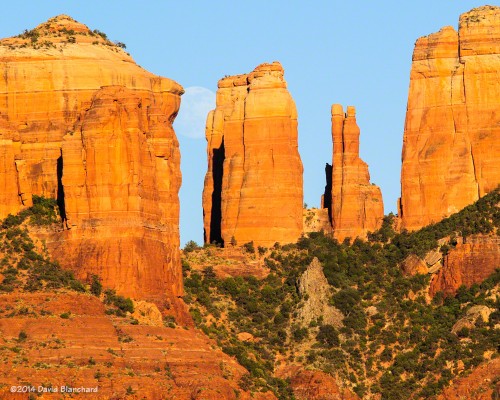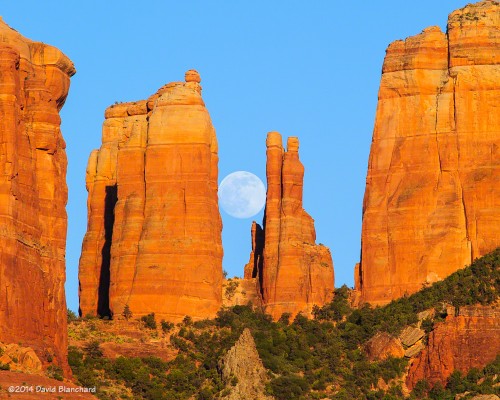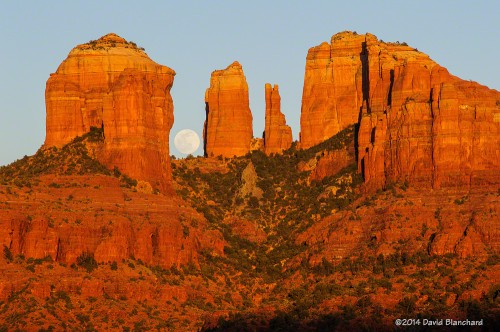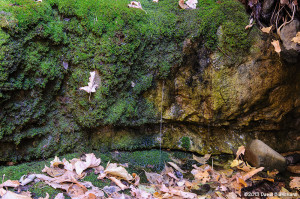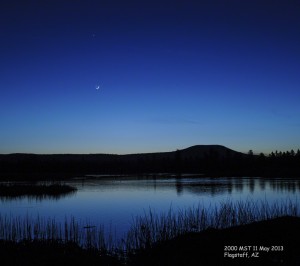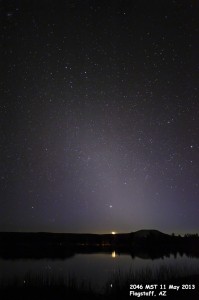Another planetary conjunction occurred yesterday (31 Aug 2014) with the close placement of Mars, Saturn, and the Moon in the evening sky. It’s only been a few weeks since the planetary conjunction of Venus and Jupiter in the morning sky so we’ve had an interesting few weeks for sky watching.
Mars and Saturn were joined by the crescent Moon to form a triangle in the evening sky. Using “The Photographers Ephemeris” I was able to determine that I could get a photograph of the triplet as they hung in the sky above Cathedral Rock in Sedona, Arizona. But if only it were that easy. After arriving at my predetermined spot I still had to move around to get a good setup. A bit of travel southward along the Templeton Trail…followed by some climbing up…then down…then back to the north…and finally I get a few minutes where they lined up with the spires of Cathedral Rock. Whew!
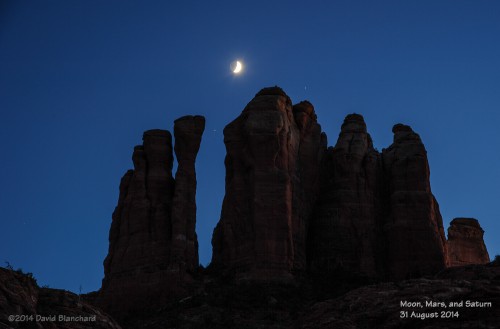
With that done, I retreated back down to the parking lot before it got too dark and spent another few hours photographing the Milky Way as it lined up with Cathedral Rock.
